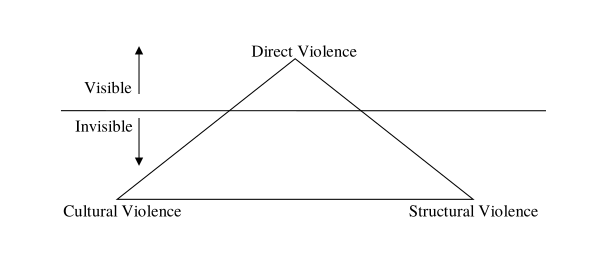Russia-Ukraine-USA/NATO: From War Propaganda to Peace Journalism
TMS PEACE JOURNALISM, 22 Aug 2022
Joan Pedro-Carañana | Propaganda in Focus – TRANSCEND Media Service
15 Aug 2022 – This series has argued that the war in Ukraine is being fueled by a propaganda campaign which hides previous and current NATO/US aggressiveness towards Russia as well as the options to reach a peaceful settlement by resolving underlying conflicts. As an exercise of responsibility by NATO countries, the first question that should arise is what have we done and what could we do better to prevent further disaster. As a counterforce to war propaganda, peace journalism asks these and other questions. It critically inquiries into the role of the different sides of the conflict and makes visible the possibilities for the cessation of armed violence and the resolution of the conflict.
The general framework for the practice of peace journalism is to provide the context of interrelations between three key forms of violence which are constitutive of war: 1. Direct, physical violence towards humans, infrastructure and the environment; 2. Cultural, communicative violence against the other; and 3. Structural violence based on unequal power relations.
The first of these dimensions refers to the part of the war which is made visible and turned into a profitable spectacle by the mainstream media. The other two dimensions tend to be invisibilised by war propaganda. NATO propaganda, adopted by the media, engages in violent communication systematically when it legitimises the escalation of direct violence, construes the other as an eternal, hateful enemy, and hides the structural conflicts and their possible solutions. Structural violence involves the lack of resolution of the underlying, root conflicts which foster further direct and symbolic forms of violence. The result of these violences is unhealed trauma which generates suffering and can act as a catalyser of more violence.
Peace journalism observes how the three forms of violence reinforce each other in a vicious cycle of violence and aims to contribute to transforming it into a virtuous cycle of conflict resolution: 1. It resorts to nonviolent communication as a means to contribute to reduce and end direct violence as soon as possible; 2. Challenges propaganda narratives and other forms of violent communication; and 3: Exposes the structural causes of direct and cultural violence. By doing so, it may contribute to psychological healing.
While mainstream media tend to focus heavily on direct violence, peace journalism reveals the importance of counteracting also communicative and structural forms of violence if lasting peace is to be secured. It understands that violent communication only leads to escalation in an action-reaction spiral which, as if it had life of its own, is difficult to stop once it gets started and contributes to direct violence. Instead, it provides tools to develop more harmonious communication processes based on the collective production and sharing of ideas. Peace journalism also emphasises that, as a means and an end, the true insurance of peace lies in advancing in the design and implementation of less violent geopolitical and systemic structures that favour a world order based on justice and mutual security and not on aggression.
In addition to presenting the contextual forms of violence, peace journalism gives priority to victims and peace proposals. It provides concrete information and analysis, giving a voice to those affected and making visible the threats that might lead to further suffering. It gathers the actions and peace proposals of the different actors, paying special attention to those coming from civil society, and asks the leaders what they are going to do to resolve the conflict. It identifies overlaps and possible points of convergence. It does not believe in panaceas, but neither does it conceive conflicts as zero-sum games; it understands that resolution depends on the parties putting something aside to gain something else and, in the longer term, to win more.
Based on the professional commitment to act as a watchdog of power, peace journalism identifies the different actors in conflict and highlights the causes and responsibilities of each one. It uncovers the lies of all sides —including our own— and highlights the impediments to peace. It does not fall into false equivalences because it is attentive to power relations and the concrete responsibility of each actor.
Peace journalism practitioners are aware that the promise of complete objectivity is a chimera, although avoiding partisanship is possible, which is why they apply three key criteria. 1. Ethics (what is just): The resolution of the conflict; 2. Tactics (how to achieve it): By peaceful means; 3. Aesthetics (sensations and perceptions): Making visible the death of war and the life of peace.
After five months of war in Ukraine, the interest of the mainstream media has decreased greatly. The main reason is that news about the war have ceased to be perceived as profitable. The commercial imperative prevails over the social value of information as a right of citizens and a requisite for the proper functioning of democratic societies. In contrast to this approach, peace journalism covers conflicts in advance of direct violence as well as in its aftermath. It is attentive to the consequences of war that extend on time and focuses not only on peacemaking, but also on peacekeeping and peacebuilding.
Mainstream media are embedded in the structures of power and a warmongering culture that makes them subordinate to NATO propaganda. It is independent media outlets, with all their budget and audience limitations, that are making visible the historical and current geopolitical relations and the responsibility of all sides, unmasking the different propaganda campaigns, discussing the options and the impediments to reaching a peace settlement, giving sustained voice to all victims and fulfilling what should be the social function of journalism. Some independent media outlets which practice peace journalism are Democracy Now!, Responsible Statecraft, Transcend, Open Democracy, Truthout, CounterPunch, Common Dreams (in English) or CTXT and Rebelión (In Spanish).
Peace journalism is based on the premise that war is the worst scenario that human beings can face. The long road to peace is always difficult to travel, but those who walk it introduce beauty in the horror, and the truth is that there is no better alternative. Peace can be —deserves to be— at least attempted.
__________________________________________
 Joan Pedro-Carañana is in the Department of Journalism and New Media of the Complutense University of Madrid. He has a European doctorate in Communication, Social Change and Development. His interest lies in the role of communication, education and culture both in the production of hegemony and in emancipatory social change. He is co-editor of El Modelo de Propaganda y el Control de los Medios, The Propaganda Model Today: Filtering Perception and Awareness (Open Access), and Talking Back to Globalization: Texts and Practices. He is a member of the Board of Directors of the Latin Union of Political Economy of Communication, Information and Culture. He collaborates with Open Democracy, Propaganda in Focus, CTXT, Rebelión and Amanece Metrópolis. His work can be found HERE.
Joan Pedro-Carañana is in the Department of Journalism and New Media of the Complutense University of Madrid. He has a European doctorate in Communication, Social Change and Development. His interest lies in the role of communication, education and culture both in the production of hegemony and in emancipatory social change. He is co-editor of El Modelo de Propaganda y el Control de los Medios, The Propaganda Model Today: Filtering Perception and Awareness (Open Access), and Talking Back to Globalization: Texts and Practices. He is a member of the Board of Directors of the Latin Union of Political Economy of Communication, Information and Culture. He collaborates with Open Democracy, Propaganda in Focus, CTXT, Rebelión and Amanece Metrópolis. His work can be found HERE.
Tags: European Union, Hegemony, Imperialism, NATO, Official Lies and Narratives, Peace, Pentagon, Propaganda, Putin, Russia, USA, Ukraine, Warfare
This article originally appeared on Transcend Media Service (TMS) on 22 Aug 2022.
Anticopyright: Editorials and articles originated on TMS may be freely reprinted, disseminated, translated and used as background material, provided an acknowledgement and link to the source, TMS: Russia-Ukraine-USA/NATO: From War Propaganda to Peace Journalism, is included. Thank you.
If you enjoyed this article, please donate to TMS to join the growing list of TMS Supporters.

This work is licensed under a CC BY-NC 4.0 License.
Read more
Click here to go to the current weekly digest or pick another article:
TMS PEACE JOURNALISM:
